
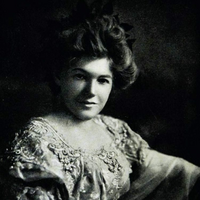
Ella Wheeler Wilcox (November 5, 1850– October 30, 1919) was an American author and poet. Her best-known work was Poems of Passion. Her most enduring work was “Solitude”, which contains the lines, “Laugh, and the world laughs with you; weep, and you weep alone”. Her autobiography, The Worlds and I, was published in 1918, a year before her death. Biography Ella Wheeler was born in 1850 on a farm in Johnstown, Wisconsin, east of Janesville, the youngest of four children. The family soon moved north of Madison. She started writing poetry at a very early age, and was well known as a poet in her own state by the time she graduated from high school. Her most famous poem, “Solitude”, was first published in the February 25, 1883 issue of The New York Sun. The inspiration for the poem came as she was travelling to attend the Governor’s inaugural ball in Madison, Wisconsin. On her way to the celebration, there was a young woman dressed in black sitting across the aisle from her. The woman was crying. Miss Wheeler sat next to her and sought to comfort her for the rest of the journey. When they arrived, the poet was so depressed that she could barely attend the scheduled festivities. As she looked at her own radiant face in the mirror, she suddenly recalled the sorrowful widow. It was at that moment that she wrote the opening lines of “Solitude”: Laugh, and the world laughs with you; Weep, and you weep alone. For the sad old earth must borrow its mirth But has trouble enough of its own She sent the poem to the Sun and received $5 for her effort. It was collected in the book Poems of Passion shortly after in May 1883. In 1884, she married Robert Wilcox of Meriden, Connecticut, where the couple lived before moving to New York City and then to Granite Bay in the Short Beach section of Branford, Connecticut. The two homes they built on Long Island Sound, along with several cottages, became known as Bungalow Court, and they would hold gatherings there of literary and artistic friends. They had one child, a son, who died shortly after birth. Not long after their marriage, they both became interested in theosophy, new thought, and spiritualism. Early in their married life, Robert and Ella Wheeler Wilcox promised each other that whoever went first through death would return and communicate with the other. Robert Wilcox died in 1916, after over thirty years of marriage. She was overcome with grief, which became ever more intense as week after week went without any message from him. It was at this time that she went to California to see the Rosicrucian astrologer, Max Heindel, still seeking help in her sorrow, still unable to understand why she had no word from her Robert. She wrote of this meeting: In talking with Max Heindel, the leader of the Rosicrucian Philosophy in California, he made very clear to me the effect of intense grief. Mr. Heindel assured me that I would come in touch with the spirit of my husband when I learned to control my sorrow. I replied that it seemed strange to me that an omnipotent God could not send a flash of his light into a suffering soul to bring its conviction when most needed. Did you ever stand beside a clear pool of water, asked Mr. Heindel, and see the trees and skies repeated therein? And did you ever cast a stone into that pool and see it clouded and turmoiled, so it gave no reflection? Yet the skies and trees were waiting above to be reflected when the waters grew calm. So God and your husband’s spirit wait to show themselves to you when the turbulence of sorrow is quieted. Several months later, she composed a little mantra or affirmative prayer which she said over and over “I am the living witness: The dead live: And they speak through us and to us: And I am the voice that gives this glorious truth to the suffering world: I am ready, God: I am ready, Christ: I am ready, Robert.”. Wilcox made efforts to teach occult things to the world. Her works, filled with positive thinking, were popular in the New Thought Movement and by 1915 her booklet, What I Know About New Thought had a distribution of 50,000 copies, according to its publisher, Elizabeth Towne. The following statement expresses Wilcox’s unique blending of New Thought, Spiritualism, and a Theosophical belief in reincarnation: “As we think, act, and live here today, we built the structures of our homes in spirit realms after we leave earth, and we build karma for future lives, thousands of years to come, on this earth or other planets. Life will assume new dignity, and labor new interest for us, when we come to the knowledge that death is but a continuation of life and labor, in higher planes”. Her final words in her autobiography The Worlds and I: “From this mighty storehouse (of God, and the hierarchies of Spiritual Beings ) we may gather wisdom and knowledge, and receive light and power, as we pass through this preparatory room of earth, which is only one of the innumerable mansions in our Father’s house. Think on these things”. Ella Wheeler Wilcox died of cancer on October 30, 1919 in Short Beach. Poetry A popular poet rather than a literary poet, in her poems she expresses sentiments of cheer and optimism in plainly written, rhyming verse. Her world view is expressed in the title of her poem “Whatever Is—Is Best”, suggesting an echo of Alexander Pope’s “Whatever is, is right,” a concept formally articulated by Gottfried Leibniz and parodied by Voltaire’s character Doctor Pangloss in Candide. None of Wilcox’s works were included by F. O. Matthiessen in The Oxford Book of American Verse, but Hazel Felleman chose no fewer than fourteen of her poems for Best Loved Poems of the American People, while Martin Gardner selected “The Way Of The World” and “The Winds of Fate” for Best Remembered Poems. She is frequently cited in anthologies of bad poetry, such as The Stuffed Owl: An Anthology of Bad Verse and Very Bad Poetry. Sinclair Lewis indicates Babbitt’s lack of literary sophistication by having him refer to a piece of verse as “one of the classic poems, like 'If’ by Kipling, or Ella Wheeler Wilcox’s ‘The Man Worth While.’” The latter opens: It is easy enough to be pleasant, When life flows by like a song, But the man worth while is one who will smile, When everything goes dead wrong. Her most famous lines open her poem “Solitude”: Laugh and the world laughs with you, Weep, and you weep alone; The good old earth must borrow its mirth, But has trouble enough of its own. “The Winds of Fate” is a marvel of economy, far too short to summarize. In full: One ship drives east and another drives west With the selfsame winds that blow. ’Tis the set of the sails, And Not the gales, That tell us the way to go. Like the winds of the sea are the ways of fate; As we voyage along through life, ’Tis the set of a soul That decides its goal, And not the calm or the strife. Ella Wheeler Wilcox cared about alleviating animal suffering, as can be seen from her poem, “Voice of the Voiceless”. It begins as follows: So many gods, so many creeds, So many paths that wind and wind, While just the art of being kind Is all the sad world needs. I am the voice of the voiceless; Through me the dumb shall speak, Till the deaf world’s ear be made to hear The wrongs of the wordless weak. From street, from cage, and from kennel, From stable and zoo, the wail Of my tortured kin proclaims the sin Of the mighty against the frail.
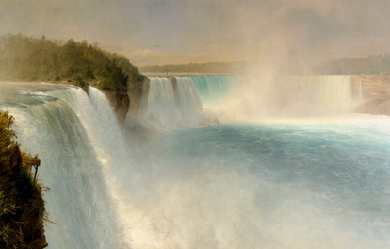
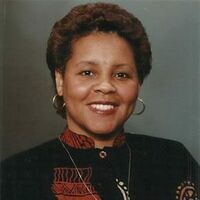
I am an American Patriot, a Believer, and a lover of God and Country. I am a widow, a mother of five children ❤️ and five grandchildren. ❤️ I’m very proud, and honored to have borne such loving, talented and hard working children. Being a Mother was my destiny. Being a writer is also part of my destiny that I truly thank God for. It’s a gift from God It was after my children were grown and left home that I became serious about writing. I have written a book titled (American Poetry and Music) that has been published by Christian Faith Publishing. Which can be purchased on Amazon.com, Barnes and Noble, and Thrift Books.com I get my inspiration from the Creator, and I go under the heading of H.S.I. Which stands for (Holy Spirit Inspiration) Some of these poems on Poeticous.com appear in my book . I am grateful for them allowing me to publish my poems on this site also. I’ve come to love this site very much. All Poems, and Original Music Videos on this site are my own original compositions, and are covered under U.S.Copyright laws.© 2024. For more info -You can find me on (Youtube) and (Facebook). Email no longer public, but if you message me from Facebook or here on Poeticous I’ll give it to you privately. No copyright infringement intended with any Pictures or videos used on these poetry pages. Some videos of artist I enjoy were obtained from Youtube, and some pictures are from Public Domain sites. Mostly they are the property of Poeticous I do not claim rights for any works except my own Original Work. Thank you, Charlotte B. Williams
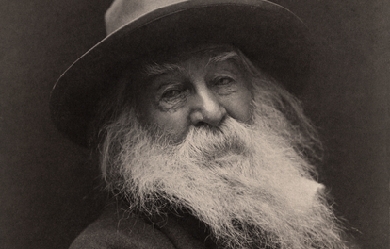
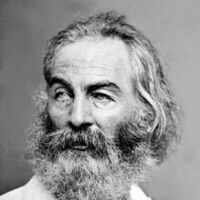
Walter Whitman (May 31, 1819 – March 26, 1892) was an American poet, essayist and journalist. A humanist, he was a part of the transition between transcendentalism and realism, incorporating both views in his works. Whitman is among the most influential poets in the American canon, often called the father of free verse. His work was controversial in his time, particularly his 1855 poetry collection Leaves of Grass, which was described as obscene for its overt sensuality.

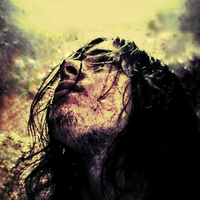
I am a 27-year-old Christian (the modern term for Follower of the Way). Some bands that I've drawn inspiration from include Demon Hunter, Skillet, Disturbed, Breaking Benjamin, All That Remains and War of Ages. I write lyrical poems, which I have been writing since I was 12 years old. A lot of my lyrics are based on life views and experiences, as well as struggles regarding my Christian faith. I am not ashamed and I will not shy away from admitting to my faith. I hope that my lyrics might open up solutions to readers that can relate to my lyrics. Thank you and God bless.
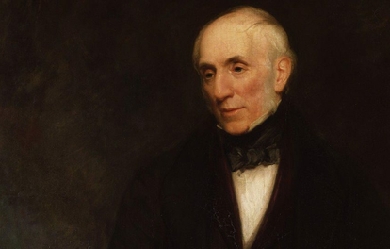
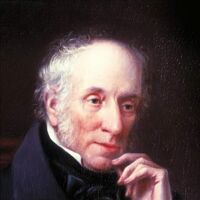
William Wordsworth (7 April 1770 – 23 April 1850) was a major English Romantic poet who, with Samuel Taylor Coleridge, helped to launch the Romantic Age in English literature with the 1798 joint publication Lyrical Ballads. Wordsworth's magnum opus is generally considered to be The Prelude, a semiautobiographical poem of his early years which he revised and expanded a number of times. It was posthumously titled and published, prior to which it was generally known as the poem "to Coleridge". Wordsworth was Britain's Poet Laureate from 1843 until his death in 1850. Early life The second of five children born to John Wordsworth and Ann Cookson, William Wordsworth was born on 7 April 1770 in Wordsworth House in Cockermouth, Cumberland—part of the scenic region in northwest England, the Lake District. His sister, the poet and diarist Dorothy Wordsworth, to whom he was close all his life, was born the following year, and the two were baptised together. They had three other siblings: Richard, the eldest, who became a lawyer; John, born after Dorothy, who went to sea and died in 1805 when the ship of which he was Master, the Earl of Abergavenny, was wrecked off the south coast of England; and Christopher, the youngest, who entered the Church and rose to be Master of Trinity College, Cambridge. Their father was a legal representative of James Lowther, 1st Earl of Lonsdale and, through his connections, lived in a large mansion in the small town. Wordsworth, as with his siblings, had little involvement with their father, and they would be distant from him until his death in 1783. Wordsworth's father, although rarely present, did teach him poetry, including that of Milton, Shakespeare and Spenser, in addition to allowing his son to rely on his own father's library. Along with spending time reading in Cockermouth, Wordsworth would also stay at his mother's parents house in Penrith, Cumberland. At Penrith, Wordsworth was exposed to the moors. Wordsworth could not get along with his grandparents and his uncle, and his hostile interactions with them distressed him to the point of contemplating suicide. After the death of their mother, in 1778, John Wordsworth sent William to Hawkshead Grammar School in Lancashire and Dorothy to live with relatives in Yorkshire; she and William would not meet again for another nine years. Although Hawkshead was Wordsworth's first serious experience with education, he had been taught to read by his mother and had attended a tiny school of low quality in Cockermouth. After the Cockermouth school, he was sent to a school in Penrith for the children of upper-class families and taught by Ann Birkett, a woman who insisted on instilling in her students traditions that included pursuing both scholarly and local activities, especially the festivals around Easter, May Day, and Shrove Tuesday. Wordsworth was taught both the Bible and the Spectator, but little else. It was at the school that Wordsworth was to meet the Hutchinsons, including Mary, who would be his future wife. Wordsworth made his debut as a writer in 1787 when he published a sonnet in The European Magazine. That same year he began attending St John's College, Cambridge, and received his B.A. degree in 1791. He returned to Hawkshead for his first two summer holidays, and often spent later holidays on walking tours, visiting places famous for the beauty of their landscape. In 1790, he took a walking tour of Europe, during which he toured the Alps extensively, and visited nearby areas of France, Switzerland, and Italy. Relationship with Annette Vallon In November 1791, Wordsworth visited Revolutionary France and became enthralled with the Republican movement. He fell in love with a French woman, Annette Vallon, who in 1792 gave birth to their child, Caroline. Because of lack of money and Britain's tensions with France, he returned alone to England the next year. The circumstances of his return and his subsequent behaviour raise doubts as to his declared wish to marry Annette, but he supported her and his daughter as best he could in later life. The Reign of Terror estranged him from the Republican movement, and war between France and Britain prevented him from seeing Annette and Caroline again for several years. There are strong suggestions that Wordsworth may have been depressed and emotionally unsettled in the mid-1790s. With the Peace of Amiens again allowing travel to France, in 1802 Wordsworth and his sister, Dorothy, visited Annette and Caroline in Calais. The purpose of the visit was to pave the way for his forthcoming marriage to Mary Hutchinson, and a mutually agreeable settlement was reached regarding Wordsworth's obligations. Afterwards he wrote the poem "It is a beauteous evening, calm and free," recalling his seaside walk with his daughter, whom he had not seen for ten years. At the conception of this poem, he had never seen his daughter before. The occurring lines reveal his deep love for both child and mother. First publication and Lyrical Ballads In his "Preface to Lyrical Ballads", which is called the "manifesto" of English Romantic criticism, Wordsworth calls his poems "experimental." The year 1793 saw Wordsworth's first published poetry with the collections An Evening Walk and Descriptive Sketches. He received a legacy of £900 from Raisley Calvert in 1795 so that he could pursue writing poetry. That year, he met Samuel Taylor Coleridge in Somerset. The two poets quickly developed a close friendship. In 1797, Wordsworth and his sister Dorothy moved to Alfoxton House, Somerset, just a few miles away from Coleridge's home in Nether Stowey. Together, Wordsworth and Coleridge (with insights from Dorothy) produced Lyrical Ballads (1798), an important work in the English Romantic movement. The volume gave neither Wordsworth's nor Coleridge's name as author. One of Wordsworth's most famous poems, "Tintern Abbey", was published in the work, along with Coleridge's "The Rime of the Ancient Mariner". The second edition, published in 1800, had only Wordsworth listed as the author, and included a preface to the poems, which was augmented significantly in the 1802 edition. This Preface to Lyrical Ballads is considered a central work of Romantic literary theory. In it, Wordsworth discusses what he sees as the elements of a new type of poetry, one based on the "real language of men" and which avoids the poetic diction of much 18th-century poetry. Here, Wordsworth gives his famous definition of poetry as "the spontaneous overflow of powerful emotions recollected in tranquility: it takes its origin from emotion recollected in tranquility." A fourth and final edition of Lyrical Ballads was published in 1805. The Borderers From 1795 to 1797, he wrote his only play, The Borderers, a verse tragedy set during the reign of King Henry III of England when Englishmen of the north country were in conflict with Scottish rovers. Wordsworth attempted to get the play staged in November 1797, but it was rejected by Thomas Harris, theatre manager of Covent Garden, who proclaimed it "impossible that the play should succeed in the representation". The rebuff was not received lightly by Wordsworth, and the play was not published until 1842, after substantial revision. Germany and move to the Lake District Wordsworth, Dorothy and Coleridge travelled to Germany in the autumn of 1798. While Coleridge was intellectually stimulated by the trip, its main effect on Wordsworth was to produce homesickness. During the harsh winter of 1798–99, Wordsworth lived with Dorothy in Goslar, and, despite extreme stress and loneliness, he began work on an autobiographical piece later titled The Prelude. He wrote a number of famous poems, including "The Lucy poems". He and his sister moved back to England, now to Dove Cottage in Grasmere in the Lake District, and this time with fellow poet Robert Southey nearby. Wordsworth, Coleridge and Southey came to be known as the "Lake Poets". Through this period, many of his poems revolve around themes of death, endurance, separation and grief. Marriage and children In 1802, after Wordsworth's return from his trip to France with Dorothy to visit Annette and Caroline, Lowther's heir, William Lowther, 1st Earl of Lonsdale, paid the ₤4, debt owed to Wordsworth's father incurred through Lowther's failure to pay his aide. Later that year, on October 4, Wordsworth married a childhood friend, Mary Hutchinson. Dorothy continued to live with the couple and grew close to Mary. The following year, Mary gave birth to the first of five children, three of whom predeceased William and Mary: * John Wordsworth (18 June 1803 – 1875). * Dora Wordsworth (16 August 1804 – 9 July 1847). * Thomas Wordsworth (15 June 1806 – 1 December 1812). * Catherine Wordsworth (6 September 1808 – 4 June 1812). * William "Willy" Wordsworth (12 May 1810 – 1883). Autobiographical work and Poems in Two Volumes Wordsworth had for years been making plans to write a long philosophical poem in three parts, which he intended to call The Recluse. He had in 1798–99 started an autobiographical poem, which he never named but called the "poem to Coleridge", which would serve as an appendix to The Recluse. In 1804, he began expanding this autobiographical work, having decided to make it a prologue rather than an appendix to the larger work he planned. By 1805, he had completed it, but refused to publish such a personal work until he had completed the whole of The Recluse. The death of his brother, John, in 1805 affected him strongly. The source of Wordsworth's philosophical allegiances as articulated in The Prelude and in such shorter works as "Lines composed a few miles above Tintern Abbey" has been the source of much critical debate. While it had long been supposed that Wordsworth relied chiefly on Coleridge for philosophical guidance, more recent scholarship has suggested that Wordsworth's ideas may have been formed years before he and Coleridge became friends in the mid 1790s. While in Revolutionary Paris in 1792, the 22-year-old Wordsworth made the acquaintance of the mysterious traveller John "Walking" Stewart (1747–1822), who was nearing the end of a thirty-years' peregrination from Madras, India, through Persia and Arabia, across Africa and all of Europe, and up through the fledgling United States. By the time of their association, Stewart had published an ambitious work of original materialist philosophy entitled The Apocalypse of Nature (London, 1791), to which many of Wordsworth's philosophical sentiments are likely indebted. In 1807, his Poems in Two Volumes were published, including "Ode: Intimations of Immortality from Recollections of Early Childhood". Up to this point Wordsworth was known publicly only for Lyrical Ballads, and he hoped this collection would cement his reputation. Its reception was lukewarm, however. For a time (starting in 1810), Wordsworth and Coleridge were estranged over the latter's opium addiction. Two of his children, Thomas and Catherine, died in 1812. The following year, he received an appointment as Distributor of Stamps for Westmorland, and the £400 per year income from the post made him financially secure. His family, including Dorothy, moved to Rydal Mount, Ambleside (between Grasmere and Rydal Water) in 1813, where he spent the rest of his life. The Prospectus In 1814 he published The Excursion as the second part of the three-part The Recluse. He had not completed the first and third parts, and never would. He did, however, write a poetic Prospectus to "The Recluse" in which he lays out the structure and intent of the poem. The Prospectus contains some of Wordsworth's most famous lines on the relation between the human mind and nature: My voice proclaims How exquisitely the individual Mind (And the progressive powers perhaps no less Of the whole species) to the external World Is fitted:--and how exquisitely, too, Theme this but little heard of among Men, The external World is fitted to the Mind. Some modern critics[who?] recognise a decline in his works beginning around the mid-1810s. But this decline was perhaps more a change in his lifestyle and beliefs, since most of the issues that characterise his early poetry (loss, death, endurance, separation and abandonment) were resolved in his writings. But, by 1820, he enjoyed the success accompanying a reversal in the contemporary critical opinion of his earlier works. Following the death of his friend the painter William Green in 1823, Wordsworth mended relations with Coleridge. The two were fully reconciled by 1828, when they toured the Rhineland together. Dorothy suffered from a severe illness in 1829 that rendered her an invalid for the remainder of her life. In 1835, Wordsworth gave Annette and Caroline the money they needed for support. The Poet Laureate and other honours Wordsworth received an honorary Doctor of Civil Law degree in 1838 from Durham University, and the same honour from Oxford University the next year. In 1842 the government awarded him a civil list pension amounting to £300 a year. With the death in 1843 of Robert Southey, Wordsworth became the Poet Laureate. He initially refused the honour, saying he was too old, but accepted when Prime Minister Robert Peel assured him "you shall have nothing required of you" (he became the only laureate to write no official poetry). When his daughter, Dora, died in 1847, his production of poetry came to a standstill. Death William Wordsworth died by re-aggravating a case of pleurisy on 23 April 1850, and was buried at St. Oswald's church in Grasmere. His widow Mary published his lengthy autobiographical "poem to Coleridge" as The Prelude several months after his death. Though this failed to arouse great interest in 1850, it has since come to be recognised as his masterpiece. Major works Lyrical Ballads, with a Few Other Poems (1798) * "Simon Lee" * "We are Seven" * "Lines Written in Early Spring" * "Expostulation and Reply" * "The Tables Turned" * "The Thorn" * "Lines Composed A Few Miles above Tintern Abbey" Lyrical Ballads, with Other Poems (1800) * Preface to the Lyrical Ballads * "Strange fits of passion have I known"[14] * "She Dwelt among the Untrodden Ways"[14] * "Three years she grew"[14] * "A Slumber Did my Spirit Seal"[14] * "I travelled among unknown men"[14] * "Lucy Gray" * "The Two April Mornings" * "Nutting" * "The Ruined Cottage" * "Michael" * "The Kitten At Play" Poems, in Two Volumes (1807) * "Resolution and Independence" * "I Wandered Lonely as a Cloud" Also known as "Daffodils" * "My Heart Leaps Up" * "Ode: Intimations of Immortality" * "Ode to Duty" * "The Solitary Reaper" * "Elegiac Stanzas" * "Composed upon Westminster Bridge, September 3, 1802" * "London, 1802" * "The World Is Too Much with Us" * Guide to the Lakes (1810) * The Excursion (1814) * Laodamia (1815, 1845) * The Prelude (1850) References Wikipedia – http://en.wikipedia.org/wiki/William_Wordsworth
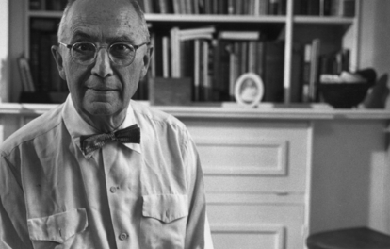
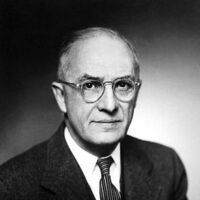
William Carlos Williams (September 17, 1883 – March 4, 1963) was an American poet closely associated with modernism and Imagism. He was also a pediatrician and general practitioner of medicine with a medical degree from the University of Pennsylvania School of Medicine. Williams "worked harder at being a writer than he did at being a physician" but excelled at both. Although his primary occupation was as a family doctor, Williams had a successful literary career as a poet. In addition to poetry (his main literary focus), he occasionally wrote short stories, plays, novels, essays, and translations. He practiced medicine by day and wrote at night. Early in his career, he briefly became involved in the Imagist movement through his friendships with Ezra Pound and H.D. (also known as Hilda Doolittle, another well-known poet whom he befriended while attending the University of Pennsylvania), but soon he began to develop opinions that differed from those of his poet/friends.


Greetings ladies and gentlemen. Welcome to my page. Thank you for taking your time to read my poetry. It's out of the normal styles of writing because it is meant to express my darkest feelings. Please leave your comments if you like what you read. I love to write dark and mysterious types of poetry. Please support me as I continue to write to help me release the emotions I built up inside me. I do hope everyone that reads this respects and understands the personal emotions that comes through my poetry. It is not meant to be altered by any means or taken. It has special meaning to me of what I write and what I express is all true. My current interests and hobbies are Ball Jointed Dolls, Poetry, Art of all forms, Role Playing Games, Playing Guitar, Painting, Drawing, and Writing. I get my inspiration while living in depression through my life, art, and music.
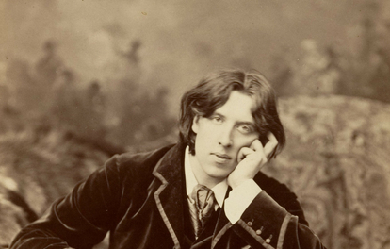
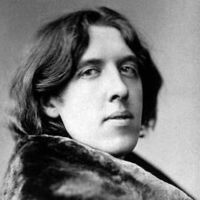
Oscar Fingal O'Flahertie Wills Wilde (16 October 1854 – 30 November 1900) was an Irish writer and poet. After writing in different forms throughout the 1880s, he became one of London's most popular playwrights in the early 1890s. Today he is remembered for his epigrams, plays and the circumstances of his imprisonment, followed by his early death. At the turn of the 1890s, he refined his ideas about the supremacy of art in a series of dialogues and essays, and incorporated themes of decadence, duplicity, and beauty into his only novel, The Picture of Dorian Gray (1890). The opportunity to construct aesthetic details precisely, and combine them with larger social themes, drew Wilde to write drama. He wrote Salome (1891) in French in Paris but it was refused a licence. Unperturbed, Wilde produced four society comedies in the early 1890s, which made him one of the most successful playwrights of late Victorian London.
I've always loved to read and wrote as a kid, though I really grasped hold of the art in high school as a release from everything I was going through then. I've had writer's block though for the past couple years and am just trying to get out of the slump now. So please read my work and leave comments if you'd like, even criticisms, I want to get better so have at it if you see there's something I need to work on. And if you follow me or favorite any of my poems, I promise to follow you back! And I won't just click the button, I'll really read your poems and comment on the ones I like. Thanks for reading, hope you enjoy. Oh and by the way, I didn't make my user name rambling woman because of the spoken sense of the word but from the rock n roll sense. Rambling: spreading or winding irregularly in various directions, traveling from place to place, wandering. I use it because I've moved around a lot and I thrive on change.
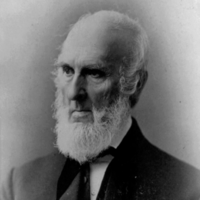
John Greenleaf Whittier (December 17, 1807 – September 7, 1892) was an American Quaker poet and advocate of the abolition of slavery in the United States. Frequently listed as one of the Fireside Poets, he was influenced by the Scottish poet Robert Burns. Whittier is remembered particularly for his anti-slavery writings as well as his book Snow-Bound.


My name is gary w..... i write 5 styles of poems and i have a different name for each style. 1. <+3 (my symbol)....poems about GOD 2. GAR ....Love poems 3. BONES....Rock poems 4. DIRTY D.O.G. .....Rap poems 5. FUN-K-KID ....funk n dance I have the name of the style with the tiltle now so you can pick your pleasure.
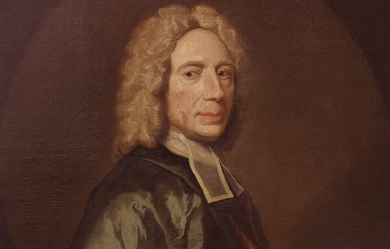
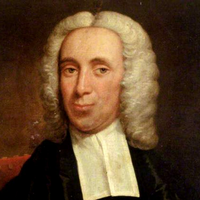
Isaac Watts (17 July 1674– 25 November 1748) was an English Christian minister, hymnwriter, theologian and logician. A prolific and popular hymn writer, his work was part of evangelization. He was recognized as the “Father of English Hymnody”, credited with some 750 hymns. Many of his hymns remain in use today and have been translated into numerous languages.

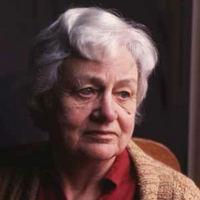
Judith Arundell Wright (31 May 1915 – 25 June 2000) was an Australian poet, environmentalist and campaigner for Aboriginal land rights. She was born in Armidale, New South Wales. The eldest child of Phillip Wright and his first wife, Ethel, she spent most of her formative years in Brisbane and Sydney. Wright was of Cornish ancestry. After the early death of her mother, she lived with her aunt and then boarded at New England Girls’ School after her father’s remarriage in 1929. After graduating, Wright studied Philosophy, English, Psychology and History at the University of Sydney. At the beginning of World War II, she returned to her father’s station to help during the shortage of labour caused by the war.


Humble, respectful, persistent a few of the words that can be used to describe myself. Kimiko Watson, a young lady of 19 years, a teacher in training. I am a student of the Bethlehem Moravian Teachers' College as our motto says: 'Mihi Cura Futuri' which is to say 'My care if for the Future'. My grandmother is the reason why I write. She has always encourage me by telling me that I can be anything and do anything that i put my mind to. I will continue to believe that any thing that I concieve I can and will achieve.
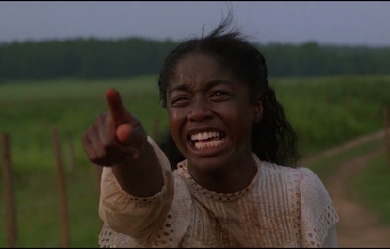
Alice Walker is a poetese, essayist, and novelist born on February 9, 1944, in Eatonton, Georgia, the eighth and last child of sharecroppers Willie Lee and Minnie Lou Grant Walker. She attended Spelman College and received a B.A. from Sarah Lawrence College. In 1982, she wrote The Color Purple, which won the Pulitzer Prize.
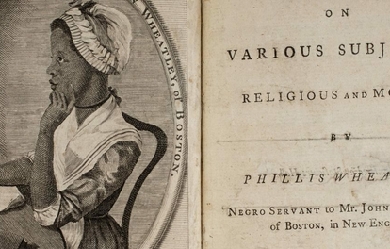
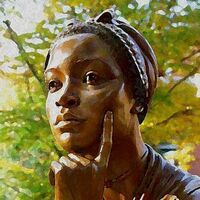
Phillis Wheatley was the first black poet in America to publish a book. She was born around 1753 in West Africa and brought to New England in 1761, where John Wheatley of Boston purchased her as a gift for his wife. Although they brought her into the household as a slave, the Wheatleys took a great interest in Phillis's education. Many biographers have pointed to her precocity; Wheatley learned to read and write English by the age of nine, and she became familiar with Latin, Greek, the Bible, and selected classics at an early age. She began writing poetry at thirteen, modeling her work on the English poets of the time, particularly John Milton, Thomas Gray, and Alexander Pope. Her poem "On the Death of the Rev. Mr. George Whitefield" was published as a broadside in cities such as Boston, New York, and Philadelphia and garnered Wheatley national acclaim. This poem was also printed in London. Over the next few years, she would print a number of broadsides elegizing prominent English and colonial leaders. Wheatley's doctor suggested that a sea voyage might improve her delicate health, so in 1771 she accompanied Nathaniel Wheatley on a trip to London. She was well received in London and wrote to a friend of the "unexpected and unmerited civility and complaisance with which I was treated by all." In 1773, thirty-nine of her poems were published in London as Poems on Various Subjects, Religious and Moral. The book includes many elegies as well as poems on Christian themes; it also includes poems dealing with race, such as the often-anthologized "On Being Brought from Africa to America." She returned to America in 1773. After Mr. and Mrs. Wheatley died, Phillis was left to support herself as a seamstress and poet. It is unclear precisely when Wheatley was freed from slavery, although scholars suggest it occurred between 1774 and 1778. In 1776, Wheatley wrote a letter and poem in support of George Washington; he replied with an invitation to visit him in Cambridge, stating that he would be "happy to see a person so favored by the muses." In 1778, she married John Peters, who kept a grocery store. They had three children together, all of whom died young. Because of the war and the poor economy, Wheatley experienced difficulty publishing her poems. She solicited subscribers for a new volume that would include thirty-three new poems and thirteen letters, but was unable to raise the funds. Phillis Wheatley, who had once been internationally celebrated, died alone in a boarding house in 1784. She was thirty-one years old. Many of the poems for her proposed second volume disappeared and have never been recovered.
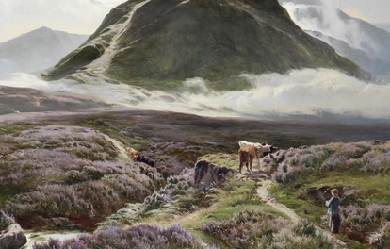
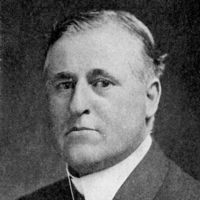
Sir William Watson (2 August 1858– 11 August 1935) was an English poet, popular in his time for the celebratory content, and famous for the controversial political content, of his verse. Initially popularly recognised, he was then neglected because of changing tastes. Poet Watson was born in Burley, in present-day West Yorkshire. He was a prolific poet of the 1890s, and a contributor to The Yellow Book, though without “decadent” associations, and on the traditionalist wing of English poetry. His reputation was established in 1891, with the publication of “Wordsworth’s Grave”. On Alfred Tennyson’s death in 1892, he was a strong candidate to be his eulogist, the commission resulting in his “Lachrymae Musarum”. He suffered a breakdown later in 1892 and was passed over for the position of Poet Laureate in favour of Alfred Austin. Watson regained his standing in 1894 with the publication of Odes and other poems, which included “Vita Nuova”, expressing gratitude for his recovery. He courted controversy later in the decade with a attack on Turkey (The Purple East, 1896) and then later again with anti-Boer War poems. After Austin’s death in 1913, Prime Minister Asquith considered him for the laureateship, despite the fact that he had written a cruel pasquil against his wife Margot Asquith ('She is not old, she is not young/ The woman with the serpent’s tongue’); but because of the contentious nature of his political poems, he was again passed over, this time for Robert Bridges. Perhaps in exchange for writing a panegyric of Lloyd George, or perhaps because of his support of the Great War effort, he was awarded a knighthood in 1917. After World War I Watson was largely forgotten. A number of literary men in 1935 issued a public appeal for a fund to support him in his old age; he died the same year. Family Watson married Adeline Maureen Pring in 1909; they had two daughters. Works * The Prince’s Quest and Other Poems (1880) * Epigrams of Art, Life and Nature (1884) * Wordsworth’s Grave and Other Poems (1890) * Poems (1892) * Lachrymae Musarum (1892) * Lyric Love: An Anthology (1892) * Eloping Angels: A Caprice (1893) * The Poems of William Watson (1893) * Excursions in Criticism: Being Some Prose Recreations Of A Rhymer (1893) * Odes and Other Poems (1894) * The Father of the Forest & Other Poems (1895) * The Purple East: A Series Of Sonnets On England’s Desertion of Armenia (1896) * The Year of Shame (1897) * The Hope of the World and Other Poems (1898) * The Collected Poems of William Watson (1899) * Ode on the Coronation of King Edward VII (1902) * Selected Poems (1903) * For England. Poems Written During Estrangement (1904) * New Poems (1909) * Sable and Purple (1910) * The Heralds of the Dawn: A Play in Eight Scenes (1912) * The Muse in Exile (1913) * Pencraft. A Plea For The Older Ways (1916) * The Man Who Saw: and Other Poems Arising out of the War (1917) * Retrogression and Other Poems (1917) * The Superhuman Antagonists and Other Poems (1919) * "Ireland Unfreed. Poems and Verses written in the early months of 1921" (1921) References Wikipedia—https://en.wikipedia.org/wiki/William_Watson_(poet)
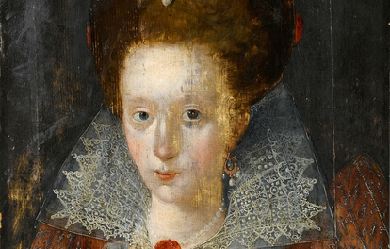
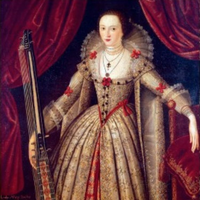
Lady Mary Wroth (18 October 1587– 1651/3) was an English poetess of the Renaissance. A member of a distinguished literary family, Lady Wroth was among the first female British writers to have achieved an enduring reputation. She is perhaps best known for having written The Countess of Montgomery’s Urania, the first extant prose romance by an English woman, and for Pamphilia to Amphilanthus, the second known sonnet sequence by an English woman. Wroth’s works also include Love’s Victory, a pastoral closet drama.

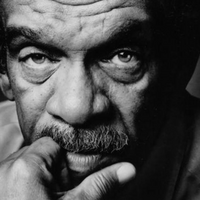
Sir Derek Alton Walcott, KCSL OBE OCC (born 23 January 1930) is a Saint Lucian–Trinidadian poet and playwright. He received the 1992 Nobel Prize in Literature. He is currently Professor of Poetry at the University of Essex. His works include the Homeric epic poem Omeros (1990), which many critics view “as Walcott’s major achievement.” In addition to having won the Nobel, Walcott has won many literary awards over the course of his career, including an Obie Award in 1971 for his play Dream on Monkey Mountain, a MacArthur Foundation “genius” award, a Royal Society of Literature Award, the Queen’s Medal for Poetry, the inaugural OCM Bocas Prize for Caribbean Literature, the 2011 T. S. Eliot Prize for his book of poetry White Egrets and the Griffin Trust For Excellence In Poetry Lifetime Recognition Award in 2015. Early life and education Walcott was born and raised in Castries, Saint Lucia, in the West Indies with a twin brother, the future playwright Roderick Walcott, and a sister, Pamela Walcott. His family is of African and European descent, reflecting the complex colonial history of the island which he explores in his poetry. His mother, a teacher, loved the arts and often recited poetry around the house. His father, who painted and wrote poetry, died at age 31 from mastoiditis while his wife was pregnant with the twins Derek and Roderick, who were born after his death. Walcott’s family was part of a minority Methodist community, who felt overshadowed by the dominant Catholic culture of the island established during French colonial rule. As a young man Walcott trained as a painter, mentored by Harold Simmons, whose life as a professional artist provided an inspiring example for him. Walcott greatly admired Cézanne and Giorgione and sought to learn from them. Walcott’s painting was later exhibited at the Anita Shapolsky Gallery in New York City, along with the art of other writers, in a 2007 exhibition named “The Writer’s Brush: Paintings and Drawing by Writers”. He studied as a writer, becoming “an elated, exuberant poet madly in love with English” and strongly influenced by modernist poets such as T. S. Eliot and Ezra Pound. Walcott had an early sense of a vocation as a writer. In the poem “Midsummer” (1984), he wrote: At 14, Walcott published his first poem, a Miltonic, religious poem in the newspaper, The Voice of St Lucia. An English Catholic priest condemned the Methodist-inspired poem as blasphemous in a response printed in the newspaper. By 19, Walcott had self-published his two first collections with the aid of his mother, who paid for the printing: 25 Poems (1948) and Epitaph for the Young: XII Cantos (1949). He sold copies to his friends and covered the costs. He later commented, I went to my mother and said, 'I’d like to publish a book of poems, and I think it’s going to cost me two hundred dollars.' She was just a seamstress and a schoolteacher, and I remember her being very upset because she wanted to do it. Somehow she got it—a lot of money for a woman to have found on her salary. She gave it to me, and I sent off to Trinidad and had the book printed. When the books came back I would sell them to friends. I made the money back. The influential Bajan poet Frank Collymore critically supported Walcott’s early work. With a scholarship, he studied at the University College of the West Indies in Kingston, Jamaica. Personal life Derek Walcott married Fay Moston, a secretary, but the marriage lasted only a few years and ended in divorce. Walcott married a second time to Margaret Maillard, who worked as an almoner in a hospital, but that also ended in divorce. In 1976, Walcott then married Norline Metivier, but this marriage also did not last. He has children named Elizabeth, Peter and Anna. Walcott is also known for his passion for traveling to different countries around the world. He splits his time between New York, Boston, and St. Lucia, where he incorporates the influences of different areas into his pieces of work. Career After graduation, Walcott moved to Trinidad in 1953, where he became a critic, teacher and journalist. Walcott founded the Trinidad Theatre Workshop in 1959 and remains active with its Board of Directors. Exploring the Caribbean and its history in a colonialist and post-colonialist context, his collection In a Green Night: Poems 1948–1960 (1962) attracted international attention. His play Dream on Monkey Mountain (1970) was produced on NBC-TV in the United States the year it was published. In 1971 it was produced by the Negro Ensemble Company off-Broadway in New York City; it won an Obie Award that year for “Best Foreign Play”. The following year, Walcott won an OBE from the British government for his work. He was hired as a teacher by Boston University in the United States, where he founded the Boston Playwrights’ Theatre in 1981. That year he also received a MacArthur Foundation Fellowship in the United States. Walcott taught literature and writing at Boston University for more than two decades, publishing new books of poetry and plays on a regular basis and retiring in 2007. He became friends with other poets, including the Russian Joseph Brodsky, who lived and worked in the US after being exiled in the 1970s, and the Irish Seamus Heaney, who also taught in Boston. His epic poem, Omeros (1990), which loosely echoes and refers to characters from The Iliad, has been critically praised “as Walcott’s major achievement.” The book received praise from publications such as The Washington Post and The New York Times Book Review, which chose the book as one of its "Best Books of 1990". Walcott was awarded the Nobel Prize in Literature in 1992, the second Caribbean writer to receive the honor after Saint-John Perse, who was born in Guadeloupe, received the award in 1960. The Nobel committee described Walcott’s work as “a poetic oeuvre of great luminosity, sustained by a historical vision, the outcome of a multicultural commitment.” He won an Anisfield-Wolf Book Award for Lifetime Achievement in 2004. His later poetry collections include Tiepolo’s Hound (2000), illustrated with copies of his watercolors; The Prodigal (2004), and White Egrets (2010), which received the T.S. Eliot Prize. In 2009, Walcott began a three-year distinguished scholar-in-residence position at the University of Alberta. In 2010, he became Professor of Poetry at the University of Essex. As a part of St Lucia’s Independence Day celebrations, in February 2016, he became one of the first knights of the Order of Saint Lucia, granting him the title of 'Sir’. Oxford Professor of Poetry candidacy In 2009, Walcott was a leading candidate for the position of Oxford Professor of Poetry. He withdrew his candidacy after reports of documented accusations against him of sexual harassment from 1981 and 1996. (The latter case was settled by Boston University out of court.) When the media learned that pages from an American book on the topic were sent anonymously to a number of Oxford academics, this aroused their interest in the university decisions. Ruth Padel, also a leading candidate, was elected to the post. Within days, The Daily Telegraph reported that she had alerted journalists to the harassment cases. Under severe media and academic pressure, Padel resigned. Padel was the first woman to be elected to the Oxford post, and journalists including Libby Purves, Yasmin Alibhai-Brown, the American Macy Halford and the Canadian Suzanne Gardner attributed the criticism of her to misogyny and a gender war at Oxford. They said that a male poet would not have been so criticized, as she had reported published information, not rumour. Numerous respected poets, including Seamus Heaney and Al Alvarez, published a letter of support for Walcott in The Times Literary Supplement, and criticized the press furore. Other commentators suggested that both poets were casualties of the media interest in an internal university affair, because the story “had everything, from sex claims to allegations of character assassination”. Simon Armitage and other poets expressed regret at Padel’s resignation. Writing Themes Methodism and spirituality have played a significant role from the beginning in Walcott’s work. He commented, “I have never separated the writing of poetry from prayer. I have grown up believing it is a vocation, a religious vocation.” Describing his writing process, he wrote, "the body feels it is melting into what it has seen… the 'I’ not being important. That is the ecstasy... Ultimately, it’s what Yeats says: ‘Such a sweetness flows into the breast that we laugh at everything and everything we look upon is blessed.’ That’s always there. It’s a benediction, a transference. It’s gratitude, really. The more of that a poet keeps, the more genuine his nature." He also notes, “if one thinks a poem is coming on... you do make a retreat, a withdrawal into some kind of silence that cuts out everything around you. What you’re taking on is really not a renewal of your identity but actually a renewal of your anonymity.” Influences Walcott has said his writing was influenced by the work of the American poets, Robert Lowell and Elizabeth Bishop, who were also friends. Playwriting He has published more than twenty plays, the majority of which have been produced by the Trinidad Theatre Workshop and have also been widely staged elsewhere. Many of them address, either directly or indirectly, the liminal status of the West Indies in the post-colonial period. Through poetry he also explores the paradoxes and complexities of this legacy. Essays In his 1970 essay “What the Twilight Says: An Overture”, discussing art and theatre in his native region (from Dream on Monkey Mountain and Other Plays), Walcott reflects on the West Indies as colonized space. He discusses the problems for an artist of a region with little in the way of truly indigenous forms, and with little national or nationalist identity. He states: “We are all strangers here... Our bodies think in one language and move in another". The epistemological effects of colonization inform plays such as Ti-Jean and his Brothers. Mi-Jean, one of the eponymous brothers, is shown to have much information, but to truly know nothing. Every line Mi-Jean recites is rote knowledge gained from the coloniser; he is unable to synthesize it or apply it to his life as a colonised person. Walcott notes of growing up in West Indian culture: “What we were deprived of was also our privilege. There was a great joy in making a world that so far, up to then, had been undefined... My generation of West Indian writers has felt such a powerful elation at having the privilege of writing about places and people for the first time and, simultaneously, having behind them the tradition of knowing how well it can be done—by a Defoe, a Dickens, a Richardson.” Walcott identifies as “absolutely a Caribbean writer”, a pioneer, helping to make sense of the legacy of deep colonial damage. In such poems as “The Castaway” (1965) and in the play Pantomime (1978), he uses the metaphors of shipwreck and Crusoe to describe the culture and what is required of artists after colonialism and slavery: both the freedom and the challenge to begin again, salvage the best of other cultures and make something new. These images recur in later work as well. He writes, “If we continue to sulk and say, Look at what the slave-owner did, and so forth, we will never mature. While we sit moping or writing morose poems and novels that glorify a non-existent past, then time passes us by.” Omeros Walcott’s epic book-length poem Omeros was published in 1990 to critical acclaim. The poem very loosely echoes and references Homer and some of his major characters from The Iliad. Some of the poem’s major characters include the island fishermen Achille and Hector, the retired English officer Major Plunkett and his wife Maud, the housemaid Helen, the blind man Seven Seas (who symbolically represents Homer), and the author himself. Although the main narrative of the poem takes place on the island of St. Lucia, where Walcott was born and raised, Walcott also includes scenes from Brookline, Massachusetts (where Walcott was living and teaching at the time of the poem’s composition), and the character Achille imagines a voyage from Africa onto a slave ship that is headed for the Americas; also, in Book Five of the poem, Walcott narrates some of his travel experiences in a variety of cities around the world, including Lisbon, London, Dublin, Rome, and Toronto. Composed in a variation on terza rima, the work explores the themes that run throughout Walcott’s oeuvre: the beauty of the islands, the colonial burden, the fragmentation of Caribbean identity, and the role of the poet in a post-colonial world. Criticism and praise Walcott’s work has received praise from major poets including Robert Graves, who wrote that Walcott “handles English with a closer understanding of its inner magic than most, if not any, of his contemporaries”, and Joseph Brodsky, who praised Walcott’s work, writing: “For almost forty years his throbbing and relentless lines kept arriving in the English language like tidal waves, coagulating into an archipelago of poems without which the map of modern literature would effectively match wallpaper. He gives us more than himself or 'a world’; he gives us a sense of infinity embodied in the language.” Walcott noted that he, Brodsky, and the Irish poet Seamus Heaney, who all taught in the United States, were a band of poets “outside the American experience”. The poetry critic William Logan critiqued Walcott’s work in a New York Times book review of Walcott’s Selected Poems. While he praised Walcott’s writing in Sea Grapes and The Arkansas Testament, he had mostly negative things to say about Walcott’s poetry, calling Omeros “clumsy” and Another Life “pretentious.”. Finally, he concluded with the faint praise that “No living poet has written verse more delicately rendered or distinguished than Walcott, though few individual poems seem destined to be remembered.” Most reviews of Walcott’s work are more positive. For instance, in The New Yorker review of The Poetry of Derek Walcott, Adam Kirsch had high praise for Walcott’s oeuvre, describing his style in the following manner: By combining the grammar of vision with the freedom of metaphor, Walcott produces a beautiful style that is also a philosophical style. People perceive the world on dual channels, Walcott’s verse suggests, through the senses and through the mind, and each is constantly seeping into the other. The result is a state of perpetual magical thinking, a kind of Alice in Wonderland world where concepts have bodies and landscapes are always liable to get up and start talking. He calls Another Life Walcott’s “first major peak” and analyzes the painterly qualities of Walcott’s imagery from his earliest work through to later books like Tiepolo’s Hound. He also explores the post-colonial politics in Walcott’s work, calling him “the postcolonial writer par excellence.” He calls the early poem “A Far Cry from Africa” a turning point in Walcott’s development as a poet. Like Logan, Kirsch is critical of Omeros which he believes Walcott fails to successfully sustain over its entirety. Although Omeros is the volume of Walcott’s that usual receives the most critical praise, Kirsch, instead believes that Midsummer is his best book. Awards and honours 1969 Cholmondeley Award 1971 Obie Award for Best Foreign Play (for Dream on Monkey Mountain) 1972 Officer of the Order of the British Empire 1981 MacArthur Foundation Fellowship ("genius award") 1988 Queen’s Gold Medal for Poetry 1990 Arts Council of Wales International Writers Prize 1990 W. H. Smith Literary Award (for poetry Omeros) 1992 Nobel Prize in Literature 2004 Anisfield-Wolf Book Award for Lifetime Achievement 2008 Honorary doctorate from the University of Essex 2011 T. S. Eliot Prize (for poetry collection White Egrets) 2011 OCM Bocas Prize for Caribbean Literature (for White Egrets) 2015 Griffin Trust For Excellence In Poetry Lifetime Recognition Award 2016 Knight Commander of the Order of Saint Lucia List of works * Works about Derek Walcott in libraries (WorldCat catalog) * Works by Derek Walcott at Open Library Further reading * Baer, William, ed. Conversations with Derek Walcott. Jackson: University Press of Mississippi, 1996. * Baugh, Edward, Derek Walcott: Memory as Vision: Another Life. London: Longman, 1978. * Baugh, Edward, Derek Walcott. Cambridge: Cambridge University Press, 2006. * Breslin, Paul, Nobody’s Nation: Reading Derek Walcott. Chicago: University of Chicago Press, 2001. ISBN 0-226-07426-9 * Brown, Stewart, ed., The Art of Derek Walcott. Chester Springs, PA.: Dufour, 1991; Bridgend: Seren Books, 1992. * Burnett, Paula, Derek Walcott: Politics and Poetics. Gainesville: University Press of Florida, 2001. * Fumagalli, Maria Cristina, The Flight of the Vernacular: Seamus Heaney, Derek Walcott and the Impress of Dante. Amsterdam-New York: Rodopi, 2001. * Fumagalli, Maria Cristina, Agenda 39:1–3 (2002–03), Special Issue on Derek Walcott. Includes Derek Walcott’s Epitaph for the Young (1949) republished here in its entirety. * Fumagalli, Maria Cristina and Patrick, Peter, “Two Healing Narratives: Suffering, Reintegration, and the Struggle of Language”, Small Axe 20 10:2 (2006), pp. 61–79. * Fumagalli, Maria Cristina, “Brushing History Against the Grain: Derek Walcott’s Tiepolo’s Hound”, in Caribbean Perspectives on Modernity: Returning Medusa’s Gaze. Charlottesville: University of Virginia Press, 2009. * Gazzoni, Andrea, Epica dell’arcipelago. Il racconto della tribù, Derek Walcott, “Omeros”. Firenze: Le Lettere, 2009. ISBN 88-6087-288-X * Hamner, Robert D., ed. Critical Perspectives on Derek Walcott. Washington, D.C.: Three Continents, 1993. ISBN 0-89410-142-0 * Hamner, Robert D., Derek Walcott. Updated Edition. Twayne’s World Authors Series. TWAS 600. New York: Twayne, 1993. * Heaney, Seamus, “The Murmur of Malvern”, in The Government of the Tongue: The 1986 T. S. Eliot Memorial Lectures and Other Critical Writings. London: Faber and Faber, 1988, pp. 23–29. * King, Bruce, Derek Walcott and West Indian Drama: “Not Only a Playwright But a Company”: The Trinidad Theatre Workshop 1959–1993. Oxford: Clarendon Press, 1995. * King, Bruce, Derek Walcott, A Caribbean Life. Oxford: Oxford University Press, 2000. * Lennard, John, “Derek Walcott”, in Jay Parini, ed., World Writers in English. 2 vols, New York & London: Charles Scribner’s Sons, 2004, II.721–46. * Morris, Mervyn, “Derek Walcott”, in Bruce King, ed., West Indian Literature, Macmillan, 1979, pp. 144–60. * Parker, Michael and Roger Starkey, eds. New Casebooks: Postcolonial Literatures: Achebe, Ngugi, Desai, Walcott. Houndmills, Basingstoke, Hampshire: Macmillan, 1995. ISBN 0-333-60801-1 * Sinnewe, Dirk, Divided to the Vein? Derek Walcott’s Drama and the Formation of Cultural Identities. Saarbrücken: Königshausen und Neumann, 2001 [Reihe Saarbrücker Beiträge 17]. ISBN 3-8260-2073-1 * Terada, Rei, Derek Walcott’s Poetry: American Mimicry. Boston: Northeastern University Press, 1992. * Thieme, John, Derek Walcott. Manchester and New York: Manchester University Press, 1999. * Walcott, Derek, Dream on Monkey Mountain and Other Plays. New York: Farrar, 1970. ISBN 0-374-50860-7 References Wikipedia—https://en.wikipedia.org/wiki/Derek_Walcott

I am a young, aspiring poet who has a great passion for epic writing. Born in South Africa in 1993 during dark economic times I have risen to the occasion and am currently persueing a career in business. My poetry has many hidden meanings and references to my own life and what I deem things to be. I am obsessed with greatness and despise the average. I live a healthy life focused on physical, mental and EQ health and strength. I can not complete this biography because It has barley begun.
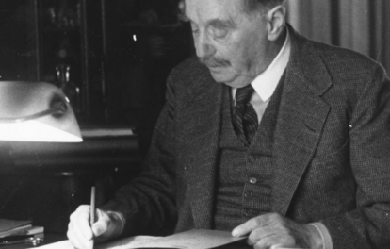
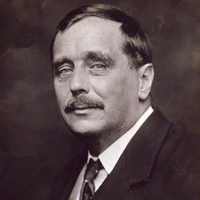
Herbert George Wells (21 September 1866 – 13 August 1946) was an English writer. He was prolific in many genres, writing dozens of novels, short stories, and works of social commentary, history, satire, biography, and autobiography, and even including two books on recreational war games. He is now best remembered for his science fiction novels and is often called the “father of science fiction”, along with Jules Verne and Hugo Gernsback.During his own lifetime, however, he was most prominent as a forward-looking, even prophetic social critic who devoted his literary talents to the development of a progressive vision on a global scale. A futurist, he wrote a number of utopian works and foresaw the advent of aircraft, tanks, space travel, nuclear weapons, satellite television and something resembling the World Wide Web. His science fiction imagined time travel, alien invasion, invisibility, and biological engineering. Brian Aldiss referred to Wells as the “Shakespeare of science fiction”. Wells rendered his works convincing by instilling commonplace detail alongside a single extraordinary assumption – dubbed “Wells’s law” – leading Joseph Conrad to hail him in 1898 as “O Realist of the Fantastic!”. His most notable science fiction works include The Time Machine (1895), The Island of Doctor Moreau (1896), The Invisible Man (1897), The War of the Worlds (1898) and the military science fiction The War in the Air (1907). Wells was nominated for the Nobel Prize in Literature four times.Wells’s earliest specialised training was in biology, and his thinking on ethical matters took place in a specifically and fundamentally Darwinian context. He was also from an early date an outspoken socialist, often (but not always, as at the beginning of the First World War) sympathising with pacifist views. His later works became increasingly political and didactic, and he wrote little science fiction, while he sometimes indicated on official documents that his profession was that of journalist. Novels such as Kipps and The History of Mr Polly, which describe lower-middle-class life, led to the suggestion that he was a worthy successor to Charles Dickens, but Wells described a range of social strata and even attempted, in Tono-Bungay (1909), a diagnosis of English society as a whole. Wells was a diabetic and co-founded the charity The Diabetic Association (known today as Diabetes UK) in 1934. Life Early life Herbert George Wells was born at Atlas House, 162 High Street in Bromley, Kent, on 21 September 1866. Called “Bertie” in the family, he was the fourth and last child of Joseph Wells (a former domestic gardener, and at the time a shopkeeper and professional cricketer) and his wife, Sarah Neal (a former domestic servant). An inheritance had allowed the family to acquire a shop in which they sold china and sporting goods, although it failed to prosper: the stock was old and worn out, and the location was poor. Joseph Wells managed to earn a meagre income, but little of it came from the shop and he received an unsteady amount of money from playing professional cricket for the Kent county team. Payment for skilled bowlers and batsmen came from voluntary donations afterwards, or from small payments from the clubs where matches were played. A defining incident of young Wells’s life was an accident in 1874 that left him bedridden with a broken leg. To pass the time he began to read books from the local library, brought to him by his father. He soon became devoted to the other worlds and lives to which books gave him access; they also stimulated his desire to write. Later that year he entered Thomas Morley’s Commercial Academy, a private school founded in 1849, following the bankruptcy of Morley’s earlier school. The teaching was erratic, the curriculum mostly focused, Wells later said, on producing copperplate handwriting and doing the sort of sums useful to tradesmen. Wells continued at Morley’s Academy until 1880. In 1877, his father, Joseph Wells, suffered a fractured thigh. The accident effectively put an end to Joseph’s career as a cricketer, and his subsequent earnings as a shopkeeper were not enough to compensate for the loss of the primary source of family income. No longer able to support themselves financially, the family instead sought to place their sons as apprentices in various occupations. From 1880 to 1883, Wells had an unhappy apprenticeship as a draper at the Southsea Drapery Emporium, Hyde’s. His experiences at Hyde’s, where he worked a thirteen-hour day and slept in a dormitory with other apprentices, later inspired his novels The Wheels of Chance, The History of Mr Polly, and Kipps, which portray the life of a draper’s apprentice as well as providing a critique of society’s distribution of wealth.Wells’s parents had a turbulent marriage, owing primarily to his mother’s being a Protestant and his father’s being a freethinker. When his mother returned to work as a lady’s maid (at Uppark, a country house in Sussex), one of the conditions of work was that she would not be permitted to have living space for her husband and children. Thereafter, she and Joseph lived separate lives, though they never divorced and remained faithful to each other. As a consequence, Herbert’s personal troubles increased as he subsequently failed as a draper and also, later, as a chemist’s assistant. However, Uppark had a magnificent library in which he immersed himself, reading many classic works, including Plato’s Republic, Thomas More’s Utopia, and the works of Daniel Defoe. This would be the beginning of Wells’s venture into literature. Teacher In October 1879, Wells’s mother arranged through a distant relative, Arthur Williams, for him to join the National School at Wookey in Somerset as a pupil–teacher, a senior pupil who acted as a teacher of younger children. In December that year, however, Williams was dismissed for irregularities in his qualifications and Wells was returned to Uppark. After a short apprenticeship at a chemist in nearby Midhurst and an even shorter stay as a boarder at Midhurst Grammar School, he signed his apprenticeship papers at Hyde’s. In 1883, Wells persuaded his parents to release him from the apprenticeship, taking an opportunity offered by Midhurst Grammar School again to become a pupil–teacher; his proficiency in Latin and science during his earlier short stay had been remembered.The years he spent in Southsea had been the most miserable of his life to that point, but his good fortune at securing a position at Midhurst Grammar School meant that Wells could continue his self-education in earnest. The following year, Wells won a scholarship to the Normal School of Science (later the Royal College of Science in South Kensington, now part of Imperial College London) in London, studying biology under Thomas Henry Huxley. As an alumnus, he later helped to set up the Royal College of Science Association, of which he became the first president in 1909. Wells studied in his new school until 1887, with a weekly allowance of 21 shillings (a guinea) thanks to his scholarship. This ought to have been a comfortable sum of money (at the time many working class families had “round about a pound a week” as their entire household income) yet in his Experiment in Autobiography, Wells speaks of constantly being hungry, and indeed photographs of him at the time show a youth who is very thin and malnourished. He soon entered the Debating Society of the school. These years mark the beginning of his interest in a possible reformation of society. At first approaching the subject through Plato’s Republic, he soon turned to contemporary ideas of socialism as expressed by the recently formed Fabian Society and free lectures delivered at Kelmscott House, the home of William Morris. He was also among the founders of The Science School Journal, a school magazine that allowed him to express his views on literature and society, as well as trying his hand at fiction; a precursor to his novel The Time Machine was published in the journal under the title The Chronic Argonauts. The school year 1886–87 was the last year of his studies.During 1888, Wells stayed in Stoke-on-Trent, living in Basford. The unique environment of The Potteries was certainly an inspiration. He wrote in a letter to a friend from the area that “the district made an immense impression on me.” The inspiration for some of his descriptions in The War of the Worlds is thought to have come from his short time spent here, seeing the iron foundry furnaces burn over the city, shooting huge red light into the skies. His stay in The Potteries also resulted in the macabre short story “The Cone” (1895, contemporaneous with his famous The Time Machine), set in the north of the city.After teaching for some time, he was briefly on the staff of Holt Academy in Wales – Wells found it necessary to supplement his knowledge relating to educational principles and methodology and entered the College of Preceptors (College of Teachers). He later received his Licentiate and Fellowship FCP diplomas from the College. It was not until 1890 that Wells earned a Bachelor of Science degree in zoology from the University of London External Programme. In 1889–90, he managed to find a post as a teacher at Henley House School in London, where he taught A. A. Milne (whose father ran the school). His first published work was a Text-Book of Biology in two volumes (1893).Upon leaving the Normal School of Science, Wells was left without a source of income. His aunt Mary—his father’s sister-in-law—invited him to stay with her for a while, which solved his immediate problem of accommodation. During his stay at his aunt’s residence, he grew increasingly interested in her daughter, Isabel. He would later go on to court her. To earn money, he began writing short humorous articles for journals such as The Pall Mall Gazette, later collecting these in volume form as Select Conversations with an Uncle (1895) and Certain Personal Matters (1897). So prolific did Wells become at this mode of journalism that many of his early pieces remain unidentified. According to David C Smith, "Most of Wells’s occasional pieces have not been collected, and many have not even been identified as his. Wells did not automatically receive the byline his reputation demanded until after 1896 or so... As a result, many of his early pieces are unknown. It is obvious that many early Wells items have been lost." His success with these shorter pieces encouraged him to write book-length work, and he published his first novel, The Time Machine, in 1895. Personal life In 1891, Wells married his cousin Isabel Mary Wells (1865–1931; from 1902 Isabel Mary Smith). The couple agreed to separate in 1894, when he had fallen in love with one of his students, Amy Catherine Robbins (1872–1927; later known as Jane), with whom he moved to Woking, Surrey in May 1895. They lived in a rented house, 'Lynton’, (now No.141) Maybury Road in the town centre for just under 18 months and married at St Pancras register office in October 1895. His short period in Woking was perhaps the most creative and productive of his whole writing career, for while there he planned and wrote The War of the Worlds and The Time Machine, completed The Island of Doctor Moreau, wrote and published The Wonderful Visit and The Wheels of Chance, and began writing two other early books, When the Sleeper Wakes and Love and Mr Lewisham.In late summer 1896, Wells and Jane moved to a larger house in Worcester Park, near Kingston upon Thames, for two years; this lasted until his poor health took them to Sandgate, near Folkestone, where he constructed a large family home, Spade House, in 1901. He had two sons with Jane: George Philip (known as “Gip”; 1901–1985) and Frank Richard (1903–1982). Jane died 6 October 1927, in Dunmow, at the age of 55. Wells had affairs with a significant number of women. In December 1909, he had a daughter, Anna-Jane, with the writer Amber Reeves, whose parents, William and Maud Pember Reeves, he had met through the Fabian Society. Amber had married the barrister G. R. Blanco White in July of that year, as co-arranged by Wells. After Beatrice Webb voiced disapproval of Wells’ “sordid intrigue” with Amber, he responded by lampooning Beatrice Webb and her husband Sidney Webb in his 1911 novel The New Machiavelli as 'Altiora and Oscar Bailey’, a pair of short-sighted, bourgeois manipulators. Between 1910–1913, novelist Elizabeth von Arnim was one of his mistresses. In 1914, he had a son, Anthony West (1914–1987), by the novelist and feminist Rebecca West, 26 years his junior. In 1920–21, and intermittently until his death, he had a love affair with the American birth control activist Margaret Sanger. Between 1924 and 1933 he partnered with the 22-year younger Dutch adventurer and writer Odette Keun, with whom he lived in Lou Pidou, a house they built together in Grasse, France. Wells dedicated his longest book to her (The World of William Clissold, 1926). When visiting Maxim Gorky in Russia 1920, he had slept with Gorky’s mistress Moura Budberg, then still Countess Benckendorf and 27 years his junior. In 1933, when she left Gorky and emigrated to London, their relationship renewed and she cared for him through his final illness. Wells asked her to marry him repeatedly, but Budberg strongly rejected his proposals.In Experiment in Autobiography (1934), Wells wrote: “I was never a great amorist, though I have loved several people very deeply”.David Lodge’s novel A Man of Parts (2011)—a 'narrative based on factual sources’ (author’s note)—gives a convincing and generally sympathetic account of Wells’s relations with the women mentioned above, and others.Director Simon Wells (born 1961), the author’s great-grandson, was a consultant on the future scenes in Back to the Future Part II (1989). Artist One of the ways that Wells expressed himself was through his drawings and sketches. One common location for these was the endpapers and title pages of his own diaries, and they covered a wide variety of topics, from political commentary to his feelings toward his literary contemporaries and his current romantic interests. During his marriage to Amy Catherine, whom he nicknamed Jane, he drew a considerable number of pictures, many of them being overt comments on their marriage. During this period, he called these pictures “picshuas”. These picshuas have been the topic of study by Wells scholars for many years, and in 2006, a book was published on the subject. Writer Some of his early novels, called “scientific romances”, invented several themes now classic in science fiction in such works as The Time Machine, The Island of Doctor Moreau, The Invisible Man, The War of the Worlds, When the Sleeper Wakes, and The First Men in the Moon. He also wrote realistic novels that received critical acclaim, including Kipps and a critique of English culture during the Edwardian period, Tono-Bungay. Wells also wrote dozens of short stories and novellas, including, “The Flowering of the Strange Orchid”, which helped bring the full impact of Darwin’s revolutionary botanical ideas to a wider public, and was followed by many later successes such as “The Country of the Blind” (1904).According to James Gunn, one of Wells’s major contributions to the science fiction genre was his approach, which he referred to as his “new system of ideas”. In his opinion, the author should always strive to make the story as credible as possible, even if both the writer and the reader knew certain elements are impossible, allowing the reader to accept the ideas as something that could really happen, today referred to as “the plausible impossible” and “suspension of disbelief”. While neither invisibility nor time travel was new in speculative fiction, Wells added a sense of realism to the concepts which the readers were not familiar with. He conceived the idea of using a vehicle that allows an operator to travel purposely and selectively forwards or backwards in time. The term “time machine”, coined by Wells, is now almost universally used to refer to such a vehicle. He explained that while writing The Time Machine, he realized that “the more impossible the story I had to tell, the more ordinary must be the setting, and the circumstances in which I now set the Time Traveller were all that I could imagine of solid upper-class comforts.” In “Wells’s Law”, a science fiction story should contain only a single extraordinary assumption. Being aware the notion of magic as something real had disappeared from society, he, therefore, used scientific ideas and theories as a substitute for magic to justify the impossible. Wells’s best-known statement of the “law” appears in his introduction to The Scientific Romances of H. G. Wells (1933), As soon as the magic trick has been done the whole business of the fantasy writer is to keep everything else human and real. Touches of prosaic detail are imperative and a rigorous adherence to the hypothesis. Any extra fantasy outside the cardinal assumption immediately gives a touch of irresponsible silliness to the invention. Dr. Griffin / The Invisible Man is a brilliant research scientist who discovers a method of invisibility, but finds himself unable to reverse the process. An enthusiast of random and irresponsible violence, Griffin has become an iconic character in horror fiction. The Island of Doctor Moreau sees a shipwrecked man left on the island home of Doctor Moreau, a mad scientist who creates human-like hybrid beings from animals via vivisection. The earliest depiction of uplift, the novel deals with a number of philosophical themes, including pain and cruelty, moral responsibility, human identity, and human interference with nature. Though Tono-Bungay is not a science-fiction novel, radioactive decay plays a small but consequential role in it. Radioactive decay plays a much larger role in The World Set Free (1914). This book contains what is surely his biggest prophetic “hit”, with the first description of a nuclear weapon. Scientists of the day were well aware that the natural decay of radium releases energy at a slow rate over thousands of years. The rate of release is too slow to have practical utility, but the total amount released is huge. Wells’s novel revolves around an (unspecified) invention that accelerates the process of radioactive decay, producing bombs that explode with no more than the force of ordinary high explosives—but which “continue to explode” for days on end. “Nothing could have been more obvious to the people of the earlier twentieth century”, he wrote, "than the rapidity with which war was becoming impossible... [but] they did not see it until the atomic bombs burst in their fumbling hands". In 1932, the physicist and conceiver of nuclear chain reaction Leó Szilárd read The World Set Free (the same year Sir James Chadwick discovered the neutron), a book which he said made a great impression on him. Wells also wrote non-fiction. His first non-fiction bestseller was Anticipations of the Reaction of Mechanical and Scientific Progress upon Human Life and Thought (1901). When originally serialised in a magazine it was subtitled “An Experiment in Prophecy”, and is considered his most explicitly futuristic work. It offered the immediate political message of the privileged sections of society continuing to bar capable men from other classes from advancement until war would force a need to employ those most able, rather than the traditional upper classes, as leaders. Anticipating what the world would be like in the year 2000, the book is interesting both for its hits (trains and cars resulting in the dispersion of populations from cities to suburbs; moral restrictions declining as men and women seek greater sexual freedom; the defeat of German militarism, and the existence of a European Union) and its misses (he did not expect successful aircraft before 1950, and averred that “my imagination refuses to see any sort of submarine doing anything but suffocate its crew and founder at sea”).His bestselling two-volume work, The Outline of History (1920), began a new era of popularised world history. It received a mixed critical response from professional historians. However, it was very popular amongst the general population and made Wells a rich man. Many other authors followed with “Outlines” of their own in other subjects. He reprised his Outline in 1922 with a much shorter popular work, A Short History of the World, a history book praised by Albert Einstein, and two long efforts, The Science of Life (1930) and The Work, Wealth and Happiness of Mankind (1931). The “Outlines” became sufficiently common for James Thurber to parody the trend in his humorous essay, “An Outline of Scientists”—indeed, Wells’s Outline of History remains in print with a new 2005 edition, while A Short History of the World has been re-edited (2006). From quite early in Wells’s career, he sought a better way to organise society and wrote a number of Utopian novels. The first of these was A Modern Utopia (1905), which shows a worldwide utopia with “no imports but meteorites, and no exports at all”; two travellers from our world fall into its alternate history. The others usually begin with the world rushing to catastrophe, until people realise a better way of living: whether by mysterious gases from a comet causing people to behave rationally and abandoning a European war (In the Days of the Comet (1906)), or a world council of scientists taking over, as in The Shape of Things to Come (1933, which he later adapted for the 1936 Alexander Korda film, Things to Come). This depicted, all too accurately, the impending World War, with cities being destroyed by aerial bombs. He also portrayed the rise of fascist dictators in The Autocracy of Mr Parham (1930) and The Holy Terror (1939). Men Like Gods (1923) is also a utopian novel. Wells in this period was regarded as an enormously influential figure; the critic Malcolm Cowley stated: “by the time he was forty, his influence was wider than any other living English writer”.Wells contemplates the ideas of nature and nurture and questions humanity in books such as The Island of Doctor Moreau. Not all his scientific romances ended in a Utopia, and Wells also wrote a dystopian novel, When the Sleeper Wakes (1899, rewritten as The Sleeper Awakes, 1910), which pictures a future society where the classes have become more and more separated, leading to a revolt of the masses against the rulers. The Island of Doctor Moreau is even darker. The narrator, having been trapped on an island of animals vivisected (unsuccessfully) into human beings, eventually returns to England; like Gulliver on his return from the Houyhnhnms, he finds himself unable to shake off the perceptions of his fellow humans as barely civilised beasts, slowly reverting to their animal natures.Wells also wrote the preface for the first edition of W. N. P. Barbellion’s diaries, The Journal of a Disappointed Man, published in 1919. Since “Barbellion” was the real author’s pen name, many reviewers believed Wells to have been the true author of the Journal; Wells always denied this, despite being full of praise for the diaries. In 1927, a Canadian teacher and writer Florence Deeks unsuccessfully sued Wells for infringement of copyright and breach of trust, claiming that much of The Outline of History had been plagiarised from her unpublished manuscript, The Web of the World’s Romance, which had spent nearly nine months in the hands of Wells’s Canadian publisher, Macmillan Canada. However, it was sworn on oath at the trial that the manuscript remained in Toronto in the safekeeping of Macmillan, and that Wells did not even know it existed, let alone had seen it. The court found no proof of copying, and decided the similarities were due to the fact that the books had similar nature and both writers had access to the same sources. In 2000, A. B. McKillop, a professor of history at Carleton University, produced a book on the case, The Spinster & The Prophet: Florence Deeks, H. G. Wells, and the Mystery of the Purloined Past. According to McKillop, the lawsuit was unsuccessful due to the prejudice against a woman suing a well-known and famous male author, and he paints a detailed story based on the circumstantial evidence of the case. In 2004, Denis N. Magnusson, Professor Emeritus of the Faculty of Law, Queen’s University, Ontario, published an article on Deeks v. Wells. This re-examines the case in relation to McKillop’s book. While having some sympathy for Deeks, he argues that she had a weak case that was not well presented, and though she may have met with sexism from her lawyers, she received a fair trial, adding that the law applied is essentially the same law that would be applied to a similar case today (i.e., 2004).In 1933, Wells predicted in The Shape of Things to Come that the world war he feared would begin in January 1940, a prediction which ultimately came true four months early, in September 1939, with the outbreak of World War II. In 1936, before the Royal Institution, Wells called for the compilation of a constantly growing and changing World Encyclopaedia, to be reviewed by outstanding authorities and made accessible to every human being. In 1938, he published a collection of essays on the future organisation of knowledge and education, World Brain, including the essay “The Idea of a Permanent World Encyclopaedia”. Prior to 1933, Wells’s books were widely read in Germany and Austria, and most of his science fiction works had been translated shortly after publication. By 1933, he had attracted the attention of German officials because of his criticism of the political situation in Germany, and on 10 May 1933, Wells’s books were burned by the Nazi youth in Berlin’s Opernplatz, and his works were banned from libraries and book stores. Wells, as president of PEN International (Poets, Essayists, Novelists), angered the Nazis by overseeing the expulsion of the German PEN club from the international body in 1934 following the German PEN’s refusal to admit non-Aryan writers to its membership. At a PEN conference in Ragusa, Wells refused to yield to Nazi sympathisers who demanded that the exiled author Ernst Toller be prevented from speaking. Near the end of the World War II, Allied forces discovered that the SS had compiled lists of people slated for immediate arrest during the invasion of Britain in the abandoned Operation Sea Lion, with Wells included in the alphabetical list of “The Black Book”.Seeking a more structured way to play war games, Wells also wrote Floor Games (1911) followed by Little Wars (1913), which set out rules for fighting battles with toy soldiers (miniatures). Little Wars is recognised today as the first recreational war game and Wells is regarded by gamers and hobbyists as “the Father of Miniature War Gaming”. A pacifist prior to the First World War, Wells stated "how much better is this amiable miniature [war] than the real thing". According to Wells, the idea of the miniature war game developed from a visit by his friend Jerome K. Jerome. After dinner, Jerome began shooting down toy soldiers with a toy cannon and Wells joined in to compete. Travels to Russia Wells visited Russia three times: 1914, 1920 and 1934. During his second visit, he saw his old friend Maxim Gorky and with Gorky’s help, met Vladimir Lenin. In his book Russia in the Shadows, Wells portrayed Russia as recovering from a total social collapse, “the completest that has ever happened to any modern social organisation.” On 23 July 1934, after visiting U.S. President Franklin D. Roosevelt, Wells went to the Soviet Union and interviewed Joseph Stalin for three hours for the New Statesman magazine, which was extremely rare at that time. He told Stalin how he had seen 'the happy faces of healthy people’ in contrast with his previous visit to Moscow in 1920. However, he also criticised the lawlessness, class-based discrimination, state violence, and absence of free expression. Stalin enjoyed the conversation and replied accordingly. As the chairman of the London-based PEN Club, which protected the rights of authors to write without being intimidated, Wells hoped by his trip to USSR, he could win Stalin over by force of argument. Before he left, he realized that no reform was to happen in the near future. Final years Wells’s literary reputation declined as he spent his later years promoting causes that were rejected by most of his contemporaries as well as by younger authors whom he had previously influenced. In this connection, George Orwell described Wells as “too sane to understand the modern world”. G. K. Chesterton quipped: “Mr Wells is a born storyteller who has sold his birthright for a pot of message”.Wells had diabetes, and was a co-founder in 1934 of The Diabetic Association (now Diabetes UK, the leading charity for people with diabetes in the UK).On 28 October 1940, on the radio station KTSA in San Antonio, Texas, Wells took part in a radio interview with Orson Welles, who two years previously had performed a famous radio adaptation of The War of the Worlds. During the interview, by Charles C Shaw, a KTSA radio host, Wells admitted his surprise at the widespread panic that resulted from the broadcast but acknowledged his debt to Welles for increasing sales of one of his “more obscure” titles. Death Wells died of unspecified causes on 13 August 1946, aged 79, at his home at 13 Hanover Terrace, overlooking Regent’s Park, London. In his preface to the 1941 edition of The War in the Air, Wells had stated that his epitaph should be: “I told you so. You damned fools”. Wells’ body was cremated at Golders Green Crematorium on 16 August 1946; his ashes were subsequently scattered into the English Channel at “Old Harry Rocks”.A commemorative blue plaque in his honour was installed by the Greater London Council at his home in Regent’s Park in 1966. Futurist A renowned futurist and “visionary”, Wells foresaw the advent of aircraft, tanks, space travel, nuclear weapons, satellite television and something resembling the World Wide Web. Asserting that “Wells visions of the future remain unsurpassed”, John Higgs, author of Stranger Than We Can Imagine: Making Sense of the Twentieth Century, states that in the late 19th century Wells “saw the coming century clearer than anyone else. He anticipated wars in the air, the sexual revolution, motorised transport causing the growth of suburbs and a proto-Wikipedia he called the “world brain”. He foresaw world wars creating a federalised Europe. Britain, he thought, would not fit comfortably in this New Europe and would identify more with the US and other English-speaking countries. In his novel The World Set Free, he imagined an “atomic bomb” of terrifying power that would be dropped from aeroplanes. This was an extraordinary insight for an author writing in 1913, and it made a deep impression on Winston Churchill.”In a review of The Time Machine for the New Yorker magazine, Brad Leithauser writes, “At the base of Wells’s great visionary exploit is this rational, ultimately scientific attempt to tease out the potential future consequences of present conditions—not as they might arise in a few years, or even decades, but millennia hence, epochs hence. He is world literature’s Great Extrapolator. Like no other fiction writer before him, he embraced “deep time.” Political views A socialist, Wells’ contemporary political impact was limited, excluding his fiction’s positivist stance on the leaps that could be made by physics towards world peace. Winston Churchill was an avid reader of Wells’ books, and after they first met in 1902 they kept in touch until Wells died in 1946. As a junior minister Churchill borrowed lines from Wells for one of his most famous early landmark speeches in 1906, and as Prime Minister the phrase “the gathering storm”—used by Churchill to describe the rise of Nazi Germany—had been written by Wells in The War of the Worlds, which depicts an attack on Britain by Martians. Wells’s extensive writings on equality and human rights, most notably his most influential work, The Rights of Man (1940), laid the groundwork for the 1948 Universal Declaration of Human Rights, which was adopted by the United Nations shortly after his death.His efforts regarding the League of Nations, on which he collaborated on the project with Leonard Woolf with the booklets The Idea of a League of Nations, Prolegomena to the Study of World Organization, and The Way of the League of Nations, became a disappointment as the organization turned out to be a weak one unable to prevent the Second World War, which itself occurred towards the very end of his life and only increased the pessimistic side of his nature. In his last book Mind at the End of Its Tether (1945), he considered the idea that humanity being replaced by another species might not be a bad idea. He referred to the era between the two World Wars as “The Age of Frustration”. Religious views Wells wrote in his book God the Invisible King (1917) that his idea of God did not draw upon the traditional religions of the world: This book sets out as forcibly and exactly as possible the religious belief of the writer. [Which] is a profound belief in a personal and intimate God.... Putting the leading idea of this book very roughly, these two antagonistic typical conceptions of God may be best contrasted by speaking of one of them as God-as-Nature or the Creator, and of the other as God-as-Christ or the Redeemer. One is the great Outward God; the other is the Inmost God. The first idea was perhaps developed most highly and completely in the God of Spinoza. It is a conception of God tending to pantheism, to an idea of a comprehensive God as ruling with justice rather than affection, to a conception of aloofness and awestriking worshipfulness. The second idea, which is contradictory to this idea of an absolute God, is the God of the human heart. The writer would suggest that the great outline of the theological struggles of that phase of civilisation and world unity which produced Christianity, was a persistent but unsuccessful attempt to get these two different ideas of God into one focus. Later in the work, he aligns himself with a "renascent or modern religion... neither atheist nor Buddhist nor Mohammedan nor Christian... [that] he has found growing up in himself".Of Christianity, he said: “it is not now true for me.... Every believing Christian is, I am sure, my spiritual brother... but if systemically I called myself a Christian I feel that to most men I should imply too much and so tell a lie”. Of other world religions, he writes: “All these religions are true for me as Canterbury Cathedral is a true thing and as a Swiss chalet is a true thing. There they are, and they have served a purpose, they have worked. Only they are not true for me to live in them.... They do not work for me”. In The Fate of Homo Sapiens (1939), Wells criticised almost all world religions and philosophies, stating "there is no creed, no way of living left in the world at all, that really meets the needs of the time… When we come to look at them coolly and dispassionately, all the main religions, patriotic, moral and customary systems in which human beings are sheltering today, appear to be in a state of jostling and mutually destructive movement, like the houses and palaces and other buildings of some vast, sprawling city overtaken by a landslide. Literary influence The science fiction historian John Clute describes Wells as “the most important writer the genre has yet seen”, and notes his work has been central to both British and American science fiction. Science fiction author and critic Algis Budrys said Wells “remains the outstanding expositor of both the hope, and the despair, which are embodied in the technology and which are the major facts of life in our world”. He was nominated for the Nobel Prize in Literature in 1921, 1932, 1935, and 1946. Wells so influenced real exploration of Mars that an impact crater on the planet was named after him. Wells’s genius was his ability to create a stream of brand new, wholly original stories out of thin air. Originality was Wells’s calling card. In a six-year stretch from 1895 to 1901, he produced a stream of what he called “scientific romance” novels, which included The Time Machine, The Island of Doctor Moreau, The Invisible Man, The War of the Worlds and The First Men in the Moon. This was a dazzling display of new thought, endlessly copied since. A book like The War of the Worlds inspired every one of the thousands of alien invasion stories that followed. It burned its way into the psyche of mankind and changed us all forever. In the United Kingdom, Wells’s work was a key model for the British “scientific romance”, and other writers in that mode, such as Olaf Stapledon, J. D. Beresford, S. Fowler Wright, and Naomi Mitchison, all drew on Wells’s example. Wells was also an important influence on British science fiction of the period after the Second World War, with Arthur C. Clarke and Brian Aldiss expressing strong admiration for Wells’s work. Among contemporary British science fiction writers, Stephen Baxter, Christopher Priest and Adam Roberts have all acknowledged Wells’s influence on their writing; all three are Vice-Presidents of the H. G. Wells Society. He also had a strong influence on British scientist J. B. S. Haldane, who wrote Daedalus; or, Science and the Future (1924), “The Last Judgement” and “On Being the Right Size” from the essay collection Possible Worlds (1927), and Biological Possibilities for the Human Species in the Next Ten Thousand Years (1963), which are speculations about the future of human evolution and life on other planets. Haldane gave several lectures about these topics which in turn influenced other science fiction writers. In the United States, Hugo Gernsback reprinted most of Wells’s work in the pulp magazine Amazing Stories, regarding Wells’s work as “texts of central importance to the self-conscious new genre”. Later American writers such as Ray Bradbury, Isaac Asimov, Frank Herbert and Ursula K. Le Guin all recalled being influenced by Wells’s work. Sinclair Lewis’s early novels were strongly influenced by Wells’s realistic social novels, such as The History of Mr Polly; Lewis would also name his first son Wells after the author.In an interview with The Paris Review, Vladimir Nabokov described Wells as his favourite writer when he was a boy and “a great artist.” He went on to cite The Passionate Friends, Ann Veronica, The Time Machine, and The Country of the Blind as superior to anything else written by Wells’s British contemporaries. In an apparent allusion to Wells’s socialism and political themes, Nabokov said: “His sociological cogitations can be safely ignored, of course, but his romances and fantasies are superb.” Jorge Luis Borges wrote many short pieces on Wells in which he demonstrates a deep familiarity with much of Wells’s work. While Borges wrote several critical reviews, including a mostly negative review of Wells’s film Things to Come, he regularly treated Wells as a canonical figure of fantastic literature. Late in his life, Borges included The Invisible Man and The Time Machine in his Prologue to a Personal Library, a curated list of 100 great works of literature that he undertook at the behest of the Argentine publishing house Emecé. Canadian author Margaret Atwood read Wells’ books, and he also inspired writers of European speculative fiction such as Karel Čapek and Yevgeny Zamyatin. Representations Literary The superhuman protagonist of J. D. Beresford’s 1911 novel, The Hampdenshire Wonder, Victor Stott, was based on Wells. In M. P. Shiel’s short story “The Primate of the Rose” (1928), there is an unpleasant womaniser named E. P. Crooks, who was written as a parody of Wells. Wells had attacked Shiel’s Prince Zaleski when it was published in 1895, and this was Shiel’s response. Wells praised Shiel’s The Purple Cloud (1901); in turn Shiel expressed admiration for Wells, referring to him at a speech to the Horsham Rotary Club in 1933 as “my friend Mr. Wells”. In C. S. Lewis’s novel That Hideous Strength (1945), the character Jules is a caricature of Wells, and much of Lewis’s science fiction was written both under the influence of Wells and as an antithesis to his work (or, as he put it, an “exorcism” of the influence it had on him). In Brian Aldiss’s novella The Saliva Tree (1966), Wells has a small off screen guest role. In Saul Bellow’s novel Mr. Sammler’s Planet (1970), Wells is one of several historical figures the protagonist met when he was a young man. In The Map of Time (2008) by Spanish author Félix J. Palma; Wells is one of several historical characters. Wells is one of the two Georges in Paul Levinson’s 2013 time-travel novelette, “Ian, George, and George,” published in Analog magazine. Dramatic Rod Taylor portrays Wells in the 1960 science fiction film The Time Machine (based on the novel of the same name), in which Wells uses his time machine to try and find his Utopian society. Malcolm McDowell portrays Wells in the 1979 science fiction film Time After Time, in which Wells uses a time machine to pursue Jack the Ripper to the present day. In the film, Wells meets “Amy” in the future who then returns to 1893 to become his second wife Amy Catherine Robbins. Wells is portrayed in the 1985 story Timelash from the 22nd season of the BBC science-fiction television series Doctor Who. In this story, Herbert, an enthusiastic temporary companion to the Doctor, is revealed to be a young H. G. Wells. The plot is loosely based upon the themes and characters of The Time Machine with references to The War of the Worlds, The Invisible Man and The Island of Doctor Moreau. The story jokingly suggests that Wells’s inspiration for his later novels came from his adventure with the Sixth Doctor. In the BBC2 anthology series Encounters about imagined meetings between historical figures, Beautiful Lies, by Paul Pender (15 August 1992) centred on an acrimonious dinner party attended by Wells (Richard Todd), George Orwell (Jon Finch), and William Empson (Patrick Ryecart). The character of Wells also appeared in several episodes of Lois & Clark: The New Adventures of Superman (1993–1997), usually pitted against the time-travelling villain known as Tempus (Lane Davies). Wells’s younger self was played by Terry Kiser, and the older Wells was played by Hamilton Camp. In the British TV mini-series The Infinite Worlds of H. G. Wells (2001), several of Wells’s short stories are dramatised but are adapted using Wells himself (Tom Ward) as the main protagonist in each story. In the Disney Channel Original Series Phil of the Future, which centres on time-travel, the present-day high school that the main characters attend is named “H. G. Wells”. In the 2006 television docudrama H. G. Wells: War with the World, Wells is played by Michael Sheen. On the science fiction television series Warehouse 13 (2009–2014), there is a female version Helena G. Wells. When she appeared she explained that her brother was her front for her writing because a female science fiction author would not be accepted. Comedian Paul F. Tompkins portrays a fictional Wells as the host of The Dead Authors Podcast, wherein Wells uses his time machine to bring dead authors (played by other comedians) to the present and interview them. H. G. Wells as a young boy appears in the Legends of Tomorrow episode “The Magnificent Eight”. In this story, the boy Wells is dying of consumption but is cured by a time-travelling Martin Stein. In the four part series The Nightmare Worlds of H. G. Wells (2016), Wells is played by Ray Winstone. In the 2017 television series version of Time After Time, based on the 1979 film, H. G. Wells is portrayed by Freddie Stroma. Literary papers In 1954, the University of Illinois at Urbana–Champaign purchased the H. G. Wells literary papers and correspondence collection. The University’s Rare Book & Manuscript Library holds the largest collection of Wells manuscripts, correspondence, first editions and publications in the United States. Among these is an unpublished material and the manuscripts of such works as The War of the Worlds and The Time Machine. The collection includes first editions, revisions, translations. The letters contain general family correspondence, communications from publishers, material regarding the Fabian Society, and letters from politicians and public figures, most notably George Bernard Shaw and Joseph Conrad. Bibliography References Wikipedia—https://en.wikipedia.org/wiki/H._G._Wells
I decide to start writing because someone close to me likes my style of writing. Being a proud father of my son, I write about my experiences with him or by myself. As well as my struggles living through my depression and ADHD which often make living really difficult. However through writing I hope others will be able to relate to these poems and know they're not alone.
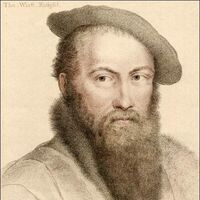
Sir Thomas Wyatt (1503 – 11 October 1542) was a 16th-century English lyrical poet credited with introducing the sonnet into English. He was born at Allington Castle, near Maidstone in Kent – though his family was originally from Yorkshire. His mother was Anne Skinner and his father, Henry Wyatt, had been one of Henry VII's Privy Councillors, and remained a trusted adviser when Henry VIII came to the throne in 1509. In his turn, Thomas Wyatt followed his father to court after his education at St John's College, Cambridge. None of Wyatt's poems were published during his lifetime—the first book to feature his verse was printed a full fifteen years after his death. Education and diplomatic career Wyatt was over six feet tall, reportedly both handsome and physically strong. Wyatt was not only a poet, but also an ambassador in the service of Henry VIII. He first entered Henry's service in 1515 as 'Sewer Extraordinary', and the same year he began studying at St John's College of the University of Cambridge. He married Elizabeth Brooke (1503–1550), the sister of George Brooke, 9th Baron Cobham, in 1522, and a year later she gave birth to a son, Thomas Wyatt, the younger, who led Wyatt's rebellion many years after his father's death. In 1524 Henry VIII assigned Wyatt to be an Ambassador at home and abroad, and some time soon after he separated from his wife on the grounds of adultery. He accompanied Sir John Russell, 1st Earl of Bedford to Rome to help petition Pope Clement VII to annul the marriage of Henry VIII to his first wife, Catherine of Aragon, an embassy whose goal was to make Henry free to marry Anne Boleyn. According to some, Wyatt was captured by the armies of Emperor Charles V when they captured Rome and imprisoned the Pope in 1527 but managed to escape and then made it back to England. In 1535 Wyatt was knighted and appointed High Sheriff of Kent for 1536. In December 1541 he was elected knight of the shire (M.P.) for Kent. Wyatt's poetry and influence Wyatt's professed object was to experiment with the English tongue, to civilise it, to raise its powers to those of its neighbours. Although a significant amount of his literary output consists of translations of sonnets by the Italian poet Petrarch, he wrote sonnets of his own. Wyatt's sonnets first appeared in Tottle's Miscellany, now on exhibit in the British Library in London. In addition to imitations of works by the classical writers Seneca and Horace, he experimented in stanza forms including the rondeau, epigrams, terza rima, ottava rima songs, satires and also with monorime, triplets with refrains, quatrains with different length of line and rhyme schemes, quatrains with codas, and the French forms of douzaine and treizaine in addition to introducing contemporaries to his poulter's measure form (Alexandrine couplets of twelve syllable iambic lines alternating with a fourteener, fourteen syllable line). and is acknowledged a master in the iambic tetrameter. While Wyatt's poetry reflects classical and Italian models, he also admired the work of Chaucer and his vocabulary reflects Chaucer’s (for example, his use of Chaucer’s word newfangleness, meaning fickle, in They flee from me that sometime did me seek). His best-known poems are those that deal with the trials of romantic love. Others of his poems were scathing, satirical indictments of the hypocrisies and flat-out pandering required of courtiers ambitious to advance at the Tudor court. Wyatt was one of the earliest poets of the Renaissance. He was responsible for many innovations in English poetry. He, along with Surrey, introduced the sonnet from Italy into England. His lyrics show great tenderness of feeling and purity of diction. He is one of the originators of the convention in love poetry according to which the mistress is painted as hard-hearted and cruel. Attribution The Egerton Manuscript, originally an album containing Wyatt's personal selection of his poems and translations, preserves 123 texts, partly in the poet's hand. Tottel's Miscellany (1557), the Elizabethan anthology which created Wyatt's posthumous reputation, ascribes 96 poems to him, (33 not extant in the Egerton Manuscript). These 156 poems can be ascribed to Wyatt with certainty, on the basis of objective evidence. Another 129 poems have been ascribed to Wyatt purely on the basis of subjective editorial judgment. They derive mostly from two Tudor manuscript anthologies, the Devonshire and Blage manuscripts. R A Rebholz in his preface to Sir Thomas Wyatt, The Complete Poems, comments, 'the problem of determining which poems Wyatt wrote is as yet unsolved'. However, as Richard Harrier's The Canon of Sir Thomas Wyatt's Poetry (1975) shows, the problem of determining which poems aren't Wyatt's is much simpler. Harrier examines the documentary evidence of the manuscripts (handwritings, organization, etc.) and establishes that there is insufficient textual warrant for assigning any of these poems to Wyatt. The only basis for ascribing these poems to Wyatt resides in editorial evaluation of their style and poetic merits. Compared with the indubitable standard presented in Wyatt's 156 unquestionably ascribable poems, fewer than 30 of these 129 poems survive scrutiny. Most can be dismissed at once. The best edition of Wyatt thus far is Joost Daalder's (1975). It presents 199 poems, including 25 misascriptions (mostly segregated as "Unascribed") and is missing a dozen poems likely to be Wyatt's. A new edition of this major poet, the inventor of lyric poetry in Modern English, is urgently needed. Assessment Critical opinions of his work have varied widely. Thomas Warton, the eighteenth century critic, considered Wyatt 'confessedly an inferior' to his contemporary Henry Howard, Earl of Surrey and that Wyatt's 'genius was of the moral and didactic species and be deemed the first polished English satirist'. The 20th century saw an awakening in his popularity and a surge in critical attention. C. S. Lewis called him ‘the father of the Drab Age’ (i.e. the unornate), from what Lewis calls the 'golden' age of the 16th century, while others see his love poetry, with its complex use of literary conceits, as anticipating that of the metaphysical poets in the next century. More recently, the critic Patricia Thomson, describes Wyatt as "the Father of English Poetry” Rumored affair with Anne Boleyn Many legends and conjectures have grown up around the notion that the young, unhappily married Wyatt fell in love with the young Anne Boleyn in the early-to-mid 1520s. The exact nature of their relationship remains uncertain today. Their acquaintance is certain. However, whether or not the two shared a romantic relationship is unknown to this day. Nineteenth-century critic Rev. George Gilfillan implies that Wyatt and Boleyn were romantically connected. To quote a modern historian "that they did look into each others eyes, and felt that to each other they were all too lovely.." is a quite possible scenario. In his poetry, Thomas calls his mistress Anna, and often embeds pieces of information that correspond with her life into his poetry. "And now I follow the coals that be quent, From Dover to Calais against my mind..." These lines could refer to Anne's trip to France in 1532 right before her marriage to Henry VIII. This could imply that Thomas followed her to France to try and persuade her otherwise or merely to be with her. Later in his life, Thomas writes, while referring to a woman, "Graven in diamonds with letters plain, There is written her fair neck round about, Noli me tangere, Caesar's, I am;" This shows Wyatt's obvious attraction to a royal lady. According to his grandson George Wyatt, who wrote a biography of Anne Boleyn many years after her death, the moment Thomas Wyatt had seen "this new beauty" on her return from France in winter 1522 he had fallen in love with her. When she attracted King Henry VIII's attentions sometime around 1525, Wyatt was the last of Anne's other suitors to be ousted by the king. According to Wyatt's grandson, after an argument over her during a game of bowls with the King, Wyatt was sent on, or himself requested, a diplomatic mission to Italy. Imprisonment on charges of adultery In May 1536 Wyatt was imprisoned in the Tower of London for allegedly committing adultery with Anne Boleyn. He was released from the Tower later that year, thanks to his friendship or his father's friendship with Thomas Cromwell, and he returned to his duties. During his stay in the Tower he may have witnessed not only the execution of Anne Boleyn (May 19, 1536) from his cell window but also the prior executions of the five men with whom she was accused of adultery. Wyatt is known to have written a poem inspired by the experience, which, though it stays clear of declaring the executions groundless, expresses grief and shock. In the 1530s, he wrote poetry in the Devonshire MS declaring his love for a woman; employing the basic acrostic formula, the first letter of each line spells out SHELTUN. A reply is written underneath it, signed by Mary Shelton, rejecting him. Mary, Anne Boleyn's first cousin, had been the mistress of Henry VIII between February and August 1535. In 1540 he was again in favor, as evident by the fact that he was granted the site and many of the manorial estates of the dissolved Boxley Abbey. However, in 1541 he was charged again with treason and the charges were again lifted—though only thanks to the intervention of Henry's fifth wife, then-Queen Catherine Howard, and upon the condition of reconciling with his adulterous wife. He was granted a full pardon and restored once again to his duties as ambassador. After the execution of Catherine Howard, there were rumours that Wyatt's wife, Elizabeth, was a possibility for wife number six, despite the fact that she was still married to Wyatt. He became ill not long after, and died on 11 October 1542 around the age of 39, while staying with his friend Sir John Horsey at Clifton Maybank House in Dorset. He is buried in nearby Sherborne Abbey. Descendants and relatives Long after Thomas Wyatt's death, his only son, Thomas Wyatt the younger, led a thwarted rebellion against Henry's daughter, Queen Mary I, for which he was executed. The rebellion's aim was to set the Protestant-minded Elizabeth, the daughter of Anne Boleyn, on the throne. His sister Margaret Wyatt was the mother of Henry Lee of Ditchley, from whom descend the Lees of Virginia, including Robert E. Lee. Thomas Wyatt's great grandson was Virginia Governor Francis Wyatt. References Wikipedia - http://en.wikipedia.org/wiki/Thomas_Wyatt_(poet)
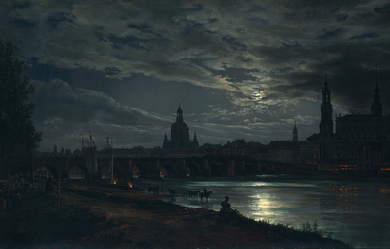
In the eternal dusk of my tormented mind, the relentless cascade of thoughts blurs the line between truth and illusion, a ceaseless torrent of existential questioning. Within this labyrinth of fractured perceptions echoes of the dreadful dance with the whispers of the soul, birth the verse that spills like ink from a fractured heart.







